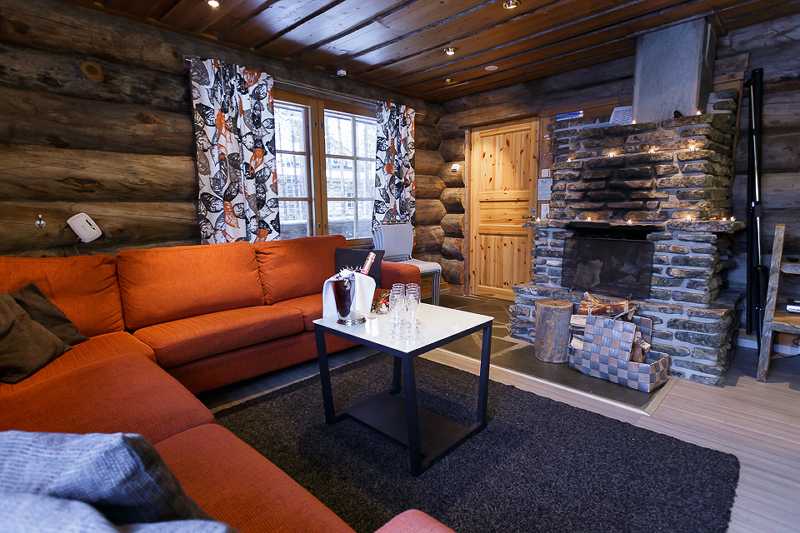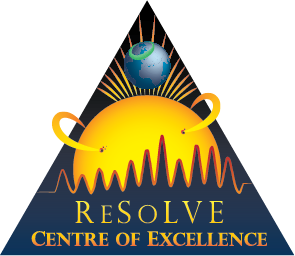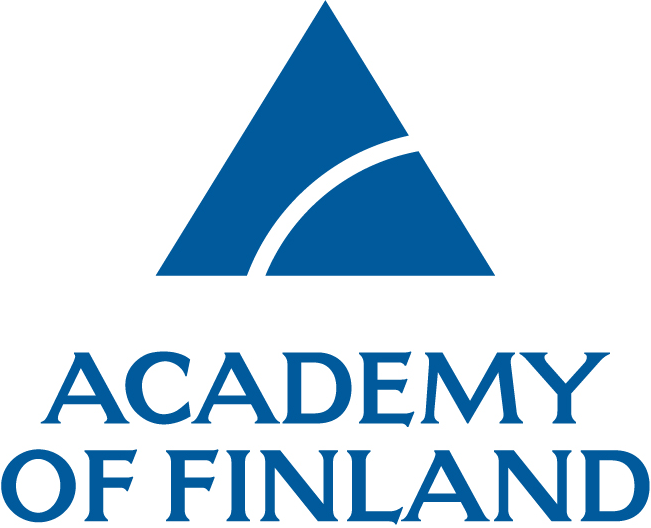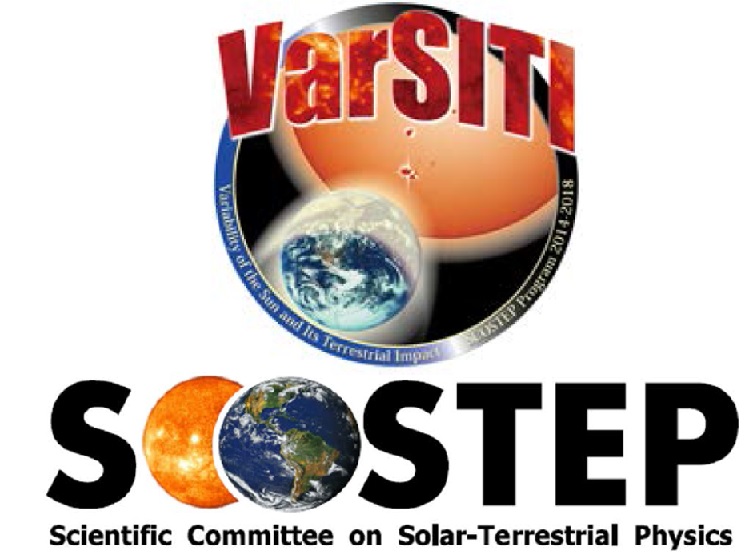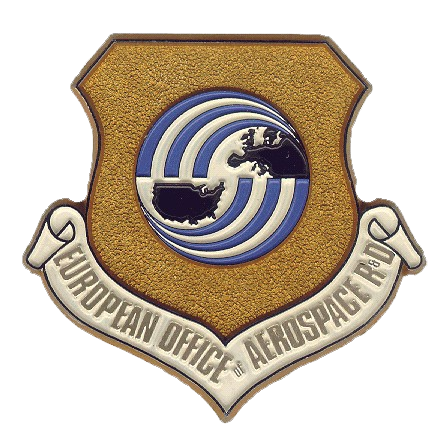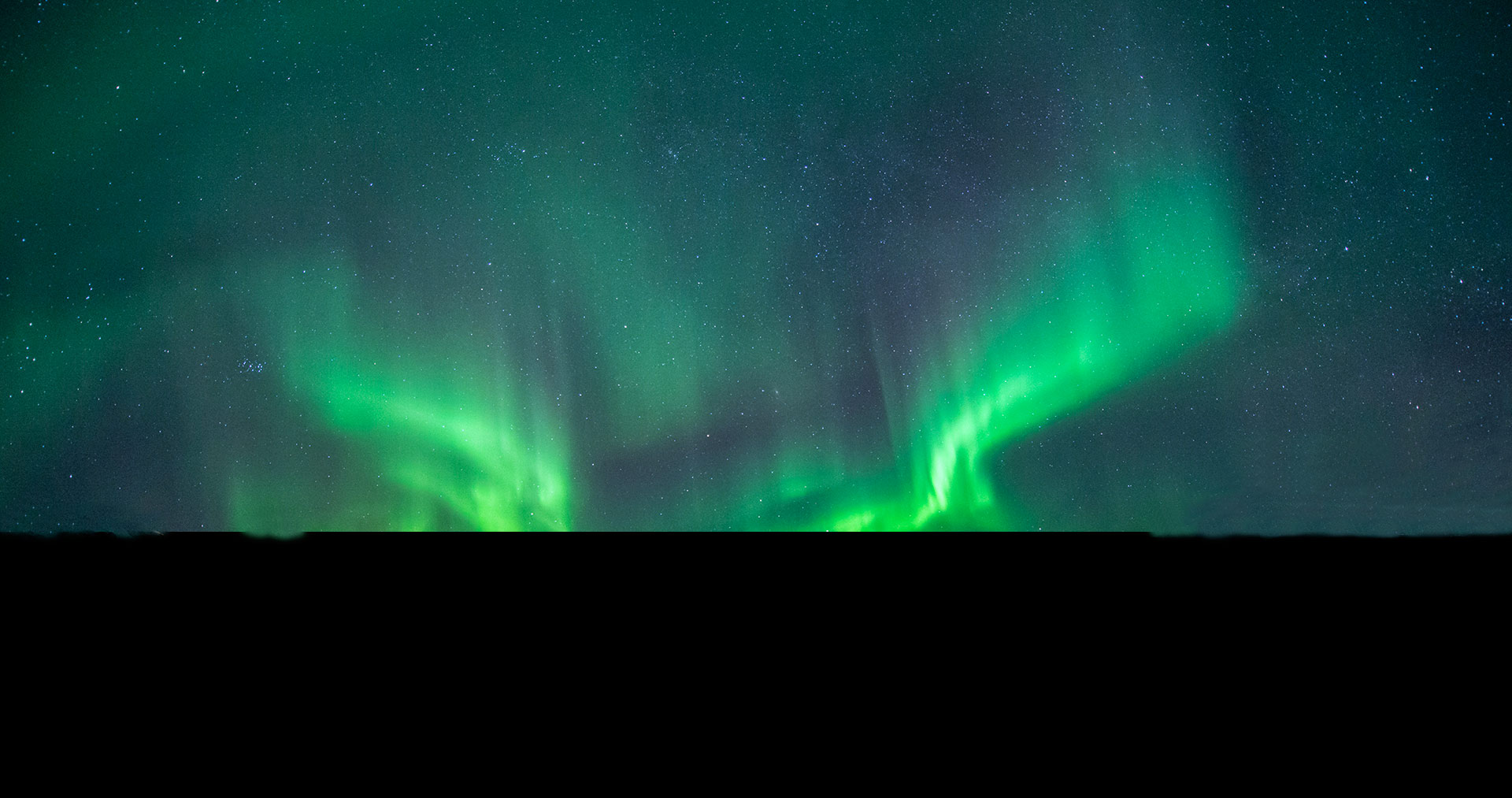
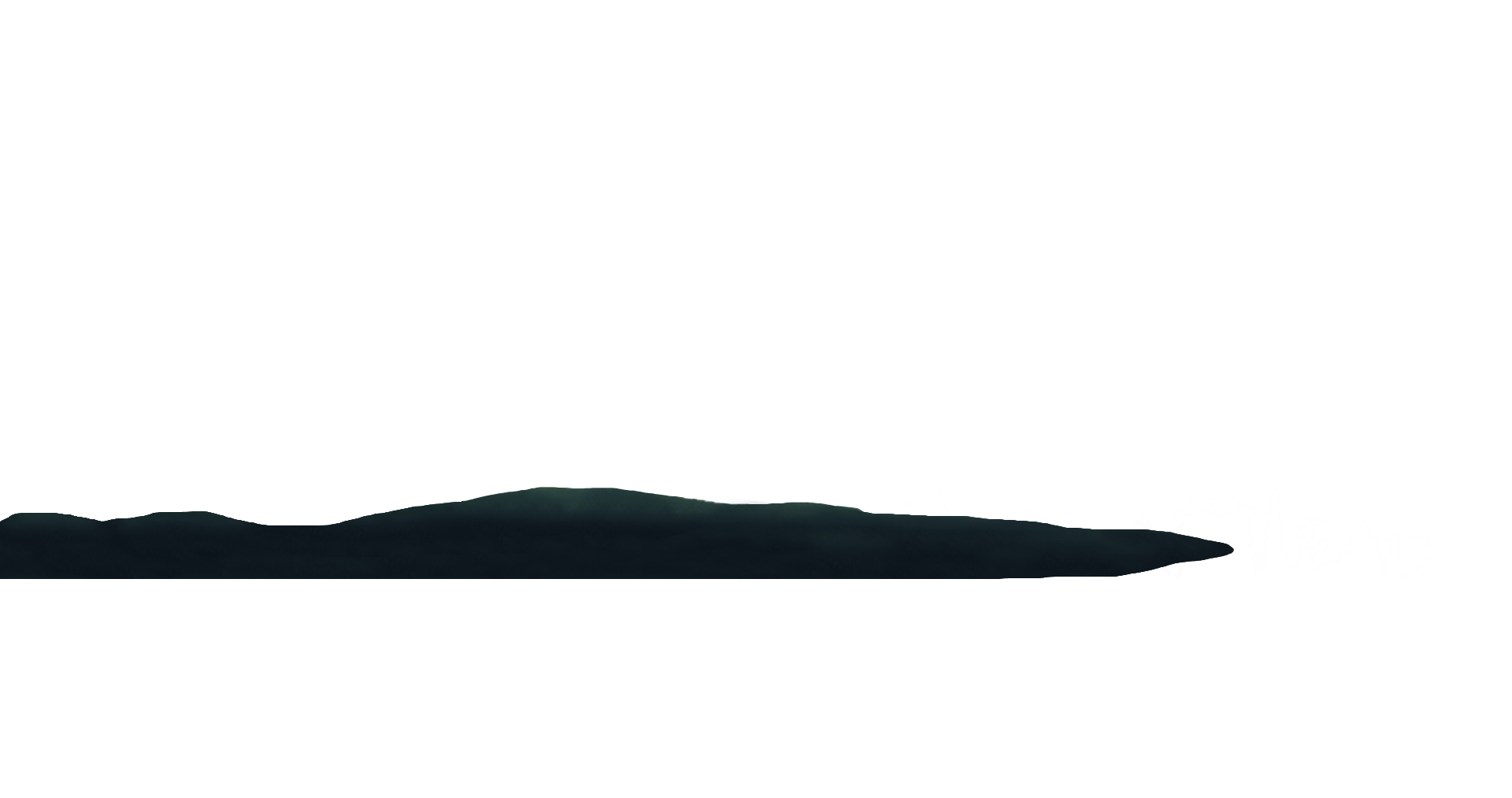
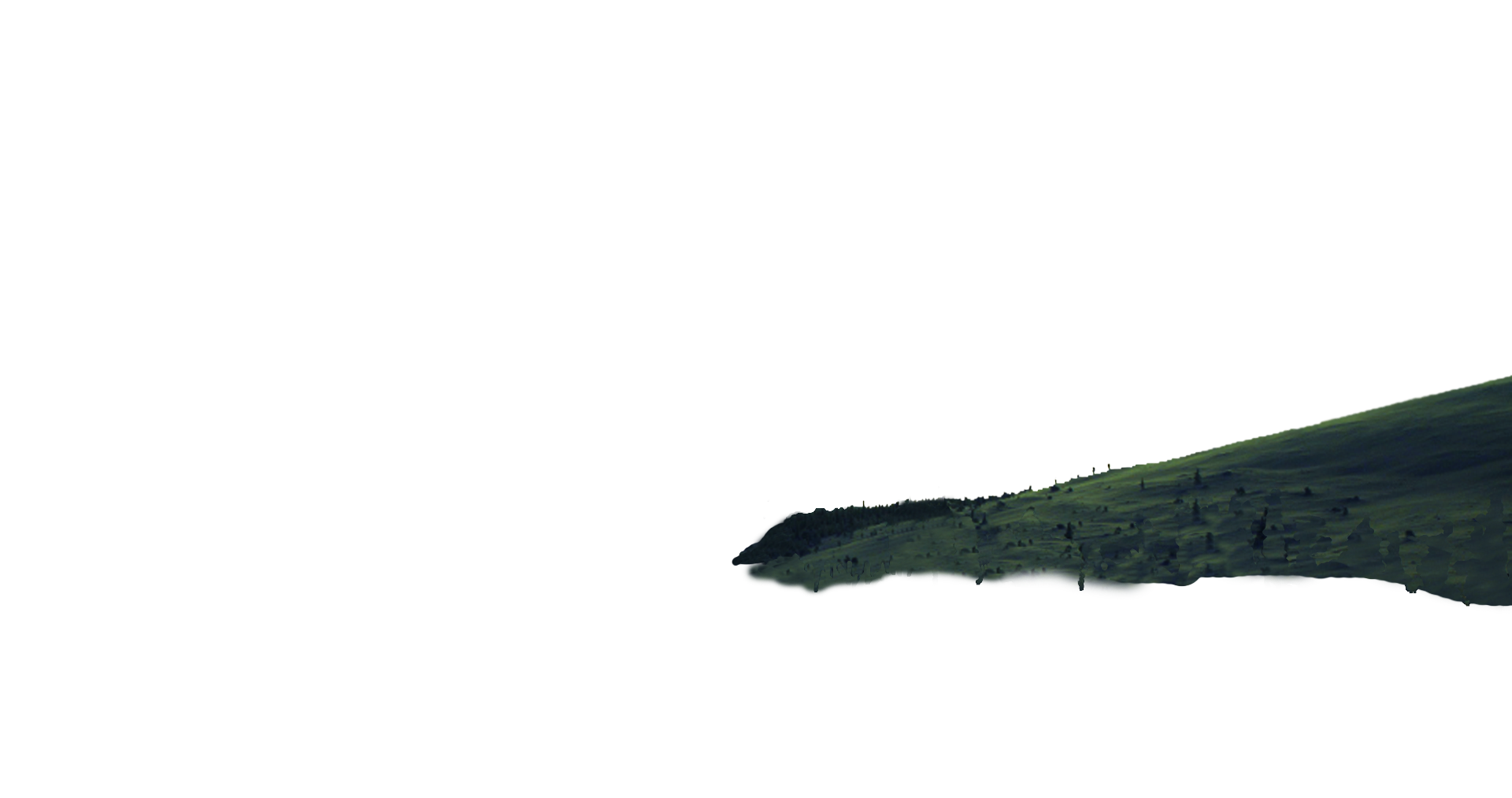
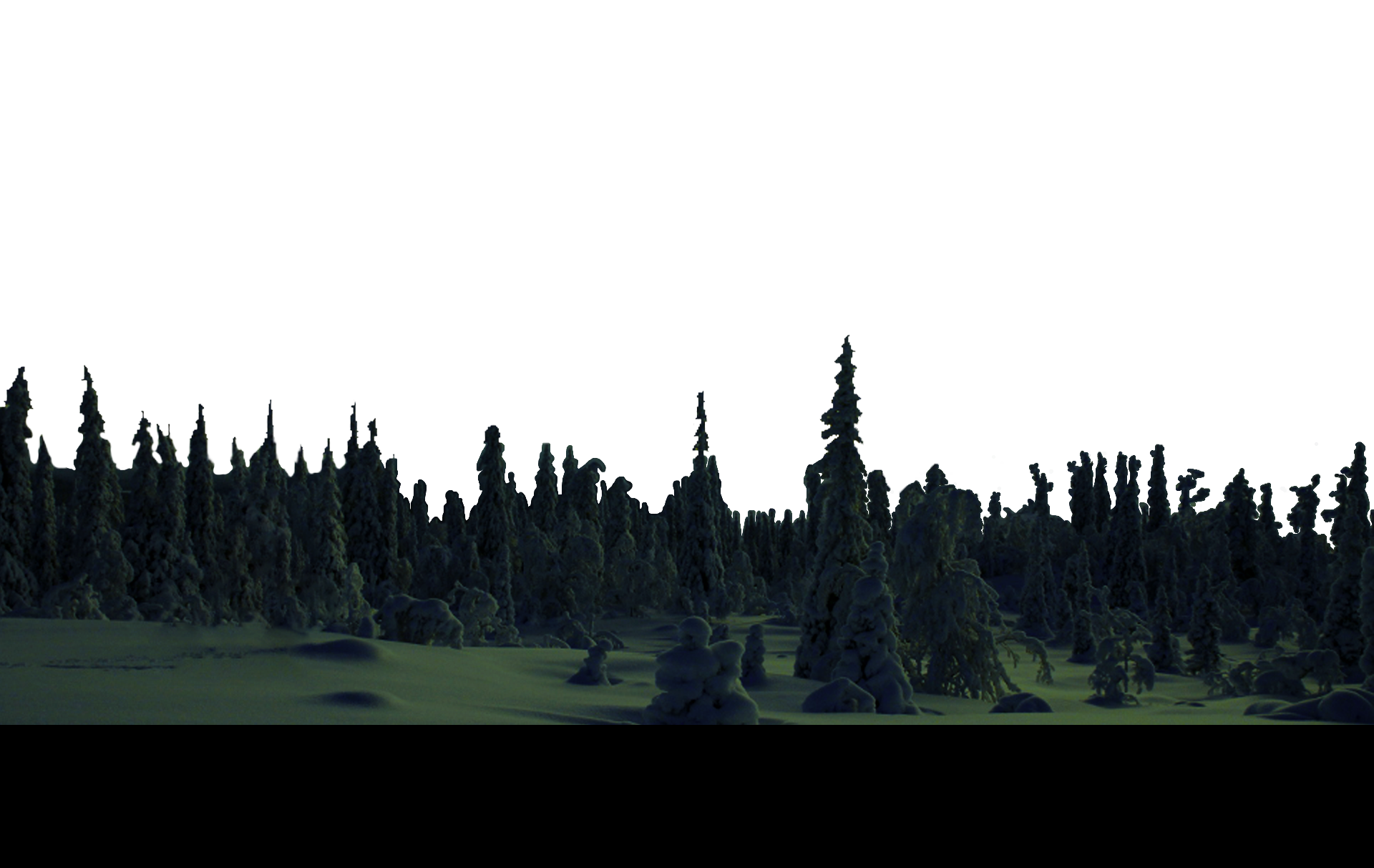


Space Climate 7 Symposium on July 8-11 , 2019 Canton Orfoed, Québec, Canada
Space Climate 6
Space Climate School on March 30 - April 3, 2016
Space Climate Symposium on April 4-7, 2016
Levi, Finnish Lapland
Levi, Finnish Lapland
About Space Climate School
Space Climate School will be concentrated on different long-term datasets available for space climate studies and on different data analysis methods related to statistical analysis and error estimation of long inhomogeneous data series. These topics are very important since space climate research involves utilization of long running measurements (e.g., solar, geomagnetic, ground-based and satellite observations), which include large, complicated and inhomogeneous datasets. Space Climate School is targeted to the international community of students and young scientists in the field of Space Physics. The lecturers of the School are internationally recognized scientists with broad teaching experience. Schools on these specific topics are rarely organized in Space Physics community, which is why the Space Climate School offers, to beginning scientists in the field, a unique and rare opportunity to learn important aspects of Space Climate science.
School program
School will take place March 30 - April 3, 2016.
Scope: Data and methods for long-term space climate studies
We recommend 2 ECTS Study points to be given for active participation in this School.
The daily schedule of the school consists of lectures, hands-on sessions and a long gap for daily outdoor activities. Current school program is visible below and can also be downloaded here.
A group photo of the school can be downloaded here.
Entire gallery of Space Climate School & Symposium photos can be accessed here.
Wednesday 30.3. School day 1
| Time | Presentation |
|---|---|
| 08:30-09:00 |
|
| 09:00-10:30 |
|
| 10:30-11:00 |
|
| 11:00-12:00 |
|
| 12:00-15:00 |
|
| 15:00-16:30 |
|
| 16:30-17:00 |
|
| 17:00-19:00 |
|
| 19:00- |
|
Thursday 31.3. School day 2
| Time | Presentation |
|---|---|
| 08:30-10:00 |
|
| 10:00-10:30 |
|
| 10:30-12:00 |
|
| 12:00-15:00 |
|
| 16:00-16:30 |
|
| 16:30-17:30 |
|
| 17:30-19:30 |
|
| 19:30- |
|
Friday 1.4. School day 3
| Time | Presentation |
|---|---|
| 09:00-10:30 |
|
| 10:30-11:00 |
|
| 11:00-12:00 |
|
| 12:00-15:00 |
|
| 15:00-16:00 |
|
| 16:00-17:30 |
|
| 17:30-18:00 |
|
| 18:00-19:30 |
|
| 19:30- |
|
Saturday 2.4. School day 4
| Time | Presentation |
|---|---|
| 08:30-10:00 |
|
| 10:00-10:30 |
|
| 10:30-12:00 |
|
| 12:00-15:30 |
|
| 15:30-17:00 |
|
| 17:00-17:30 |
|
| 17:30-19:00 |
|
| 19:30- |
|
Sunday 3.4. School day 5
| Time | Presentation |
|---|---|
| 08:30-10:00 |
|
| 10:00-10:30 |
|
| 10:30-11:30 |
|
| 11:30-13:00 |
|
| 13:00-13:01 |
|
| 13:01-15:00 |
|
List of students
- ALi Elden Khaled
- Helwan University, Egypt
- Artamonov Anton
- University of Oulu, Finland
- Astikainen Jaakko
- University of Oulu, Finland
- Asvestari Eleanna
- University of Oulu, Finland
- Ayalew Tibebu
- University of Oulu, Finland
- Beaudoin Patrice
- Université de Montréal, Canada
- Chatzistergos Theodosios
- Max planck institute for solar system science, Germany
- Cosentino Maria Helga
- University of Alberta, Canada
- Deng Linhua
- Yunnan Observatories, Chinese Academy of Sciences, China
- Dosa Melinda
- Wigner Research Centre for Physics, Hungary
- Dumbovic Mateja
- Hvar Observatory, University of Zagreb, Croatia
- Ellahouny Nada
- Space Weather Monitoring Center, Egypt
- Frassati Federica
- INAF, Astrophysical Observatory of Turin, Italy
- Gravet Romaric
- LPC2E, France
- Hamada Amr
- University of Oulu, Finland
- Hilbig Tina
- Institute of Environmental Physics, University of Bremen, Germany
- Holappa Lauri
- University of Oulu, Finland
- Hosteaux Skralan
- KU Leuven Centre for mathematical Plasma-Astrophysics, Belgium
- Hussein Amira
- National Authority for Remote Sensing and Space Science, Egypt
- Hynönen Reko
- Finnish Meteorological Institute, Finland
- Illarionov Egor
- Moscow State University, Russia
- Kay Christina
- Boston University/NASA GSFC, USA
- Korsós Marianna
- Un. of Sheffield, UK
- Koskela Jennimari
- University of Oulu, Finland
- Lakka Antti
- Aalto University, Finland
- Leussu Raisa
- University of Oulu, Finland
- Madbouly Aliaa
- Helwan University, Egypt
- Mekhaldi Florian
- Lund University, Sweden
- Nikbakhsh Shabnam
- Finnish Meteorological Institute, Finland
- Nosikova Nataliya
- Schmidt Institute of Physics of the Earth, Russia
- Olspert Nigul
- Aalto University, Finland
- Peck Courtney
- University of Colorado - Boulder, USA
- Peitso Pyry
- Finnish Meteorological Institute, Finland
- Poluianov Stepan
- Faculty of Sciences, University of Oulu, Finland
- Qvick Timo
- University of Oulu, Finland
- Rakhmanova Liudmila
- Space Research Institute of Russian Academy of Sciences, Russia
- Salminen Antti
- University of Oulu, Finland
- Simard Corinne
- Université de Montréal, Canada
- Smith Ashley
- University of Edinburgh, UK, UK
- Tremblay Benoit
- Université de Montréal, Canada
- Virtanen Iiro
- University of Oulu, Finland
- Väisänen Pauli
- University of Oulu, Finland
- Väänänen Mika
- University of Helsinki, Finland
- Wagner Daniel
- AIU, U Jena, Germany
- Wu Chi Ju
- Max-Planck Institute for Solar System Research, Germany
- Zaitsev Ivan
- Saint-Petersburg State University, Russia
- Ødegaard Linn-Kristine Glesnes
- Birkeland Centre for Space Science, Norway
Special offer for school students
No registration fee!
There will be no registration fee for students selected to the Space Climate School.
Free accommodation!
The School will also include free housing for students in cozy and modern 10-people cottages. For more information see accommodation...
School application system has now been closed. Students for school have been selected and informed.
About Space Climate 6 Symposium
Space Climate 6 Symposium brings together leading experts on the field of space climate. The objective of the Symposium is to better understand the causes and effects of long-term variations in solar activity including better understanding of solar magnetic dynamo process and how this produces various forms of solar activity (e.g., sunspots, flares, coronal mass ejections, coronal holes, high-speed solar wind streams etc.) and to better understand how the varying solar activity affects the near-Earth space, atmosphere and even climate on time scales from a few solar rotations to centennial time scales and beyond up to several millennia. A key aspect of this is also to understand the intricacies of various datasets used to make inferences about long-term solar variations (e.g., the sunspot number series and geomagnetic observations).
Group photos of the symposium: photo 1, photo 2.
Entire gallery of Space Climate School & Symposium photos can be accessed here.
Registration fees
Regular
early bird/after deadline
400€ / 450€
Student/Spouse
early bird/after deadline
250€ / 300€
Symposium deadlines
Early bird registration deadline
31.1.2016
Special hotel price deadline
31.1.2016
Abstract submission is now closed!
31.1.2016
Information for presenters
Poster format is A0 portait.
Registration
Symposium program
Below you can find the daily program, list of posters and list of participants
Monday 4.4. Symposium day 1
| 08:30-09:00 |
|
|---|
Session 1: Solar dynamo as a driver of space climate
| 09:00-09:30 |
|
|---|---|
| 09:30-09:50 |
|
| 09:50-10:10 |
|
| 10:10-10:30 |
|
| 10:30-11:00 |
|
| 11:00-11:20 |
|
| 11:20-11:40 |
|
| 11:40-12:00 |
|
| 12:00-12:20 |
|
| 12:20-14:30 |
|
Session 2A: Long-term solar activity
| 14:30-15:00 |
|
|---|---|
| 15:00-15:20 |
|
| 15:20-15:50 |
|
| 15:50-16:10 |
|
| 16:10-16:30 |
|
| 16:30-17:00 |
|
| 17:00-17:20 |
|
| 17:20-17:40 |
|
| 17:40-18:00 |
|
| 18:00- |
|
Tuesday 5.4. Symposium day 2
Session 2B: Long-term solar activity
| 08:30-09:00 |
|
|---|---|
| 09:00-09:20 |
|
| 09:20-09:40 |
|
| 09:40-10:00 |
|
| 10:00-10:30 |
|
| 10:30-10:50 |
|
| 10:50-11:20 |
|
| 11:20-13:00 |
|
| 13:00-14:30 |
|
Session 3: Asymmetric Sun
| 14:30-14:50 |
|
|---|---|
| 14:50-15:10 |
|
| 15:10-15:40 |
|
| 15:40-16:00 |
|
| 16:00-16:20 |
|
| 16:20-16:50 |
|
Session 4A: Extreme events in the Sun-Earth system
| 16:50-17:20 |
|
|---|---|
| 17:20-17:40 |
|
| 17:40-18:10 |
|
| 18:10-18:30 |
|
| 19:15- |
|
Wednesday 6.4. Symposium day 3
Session 4B: Extreme events in the Sun-Earth system
| 08:30-08:50 |
|
|---|---|
| 08:50-09:10 |
|
| 09:10-09:30 |
|
| 09:30-09:50 |
|
| 09:50-10:10 |
|
| 10:10-10:40 |
|
Session 5A: Solar photosphere, corona and solar wind
| 10:40-11:00 |
|
|---|---|
| 11:00-11:20 |
|
| 11:20-11:40 |
|
| 11:40-12:10 |
|
| 12:10-12:30 |
|
| 12:30-15:00 |
|
Session 5B: Solar photosphere, corona and solar wind
| 15:00-15:20 |
|
|---|---|
| 15:20-15:40 |
|
| 15:40-16:00 |
|
| 16:00-16:30 |
|
Session 6: SW-Magnetosphere-Ionosphere interaction
| 16:30-16:50 |
|
|---|---|
| 16:50-17:10 |
|
| 17:10-17:30 |
|
| 17:30-17:50 |
|
| 17:50-18:20 |
|
Thursday 7.4. Symposium day 4
Session 7: Solar influence on atmosphere and climate
| 08:30-08:50 |
|
|---|---|
| 08:50-09:10 |
|
| 09:10-09:30 |
|
| 09:30-09:50 |
|
| 09:50-10:10 |
|
| 10:10-10:30 |
|
| 10:30-11:00 |
|
| 11:00-11:20 |
|
| 11:20-11:40 |
|
| 11:40-12:00 |
|
| 12:00-12:20 |
|
| 12:20-12:50 |
|
Posters
| DYN-1 | |
|---|---|
| DYN-2 | |
| DYN-3 | |
| DYN-4 | |
| DYN-5 | |
| LON-1 | |
| LON-2 | |
| LON-3 | |
| LON-4 | |
| LON-5 | |
| LON-6 | |
| LON-7 | |
| LON-8 | |
| LON-9 | |
| LON-10 | |
| LON-11 | |
| LON-12 | |
| AS-1 | |
| AS-2 | |
| EX-1 | |
| COR-1 | |
| COR-2 | |
| COR-3 | |
| COR-4 | |
| COR-5 | |
| COR-6 | |
| COR-7 | |
| COR-8 | |
| COR-9 | |
| COR-10 | |
| COR-11 | |
| COR-12 | |
| COR-13 | |
| COR-14 | |
| MAG-1 | |
| MAG-2 | |
| MAG-3 | |
| MAG-4 | |
| MAG-5 | |
| MAG-6 | |
| MAG-7 | |
| CLI-1 | |
| CLI-2 | |
| CLI-3 | |
| CLI-4 | |
| CLI-5 | |
| CLI-6 | |
| CLI-7 | |
| CLI-8 | |
| CLI-9 | |
| CLI-10 | |
| CLI-11 | |
| CLI-12 | |
| CLI-13 | |
| CLI-14 | |
| CLI-15 |
List of participants
- Arlt Rainer
- Leibniz Institute for Astrophysics Potsdam, Germany
- Arsenovic Pavle
- ETH Zürich, Switzerland
- Artamonov Anton
- University of Oulu, Finland
- Asikainen Timo
- University of Oulu, Finland
- Astikainen Jaakko
- University of Oulu, Finland
- Asvestari Eleanna
- University of Oulu, Finland
- Ayalew Tibebu
- University of Oulu, Finland
- Baker Daniel
- LASP, University of Colorado Boulder, USA
- Baranyi Tünde
- Debrecen Heliophysical Observatory, Hungary
- Barnard Luke
- Department of Meteorology, University of Reading, UK
- Beaudoin Patrice
- Université de Montréal, Canada
- Belova Evgenia
- Swedish Institute of Space Physics, Sweden
- Boclet Brice
- Aix Marseille Université, CNRS, LAM, France
- Browning Matthew
- University of Exeter, UK
- Čalogović Jaša
- Hvar Observatory, Faculty of Geodesy, University of Zagreb, Croatia
- Cameron Robert
- Max Planck Institute for Solar System Research, Germany
- Chatzistergos Theodosios
- Max planck institute for solar system science, Germany
- Chen Tao
- National Space Science Center, China
- Clette Frédéric
- Royal Observatory of Belgium, Belgium
- Cliver Ed
- National Solar Observatory, USA
- Cnossen Ingrid
- British Antarctic Survey, UK
- De Groof Anik
- ESA/ESAC, Spain
- Deng Linhua
- Yunnan Observatories, China
- Dosa Melinda
- Wigner Research Centre for Physics, Hungary
- Dumbovic Mateja
- Hvar Observatory, University of Zagreb, Croatia
- Erdos Geza
- Wigner RCP, Budapest, Hungary, Hungary
- Friedli Thomas K.
- Rudolf Wolf Society, Switzerland
- Gent Frederick
- Aalto University, Finland
- Georgieva Katya
- Space Research and Technology Institute, Bulgaria
- Getko Ryszarda
- Astronomical Institute of Wroclaw University, Poland
- Gopalswamy Nat
- NASA Goddard Space Flight Center, USA
- Gravet Romaric
- LPC2E, France
- Hajra Rajkumar
- CNRS, Orleans, France
- Hamada Amr
- University of Oulu, Finland
- Hanzlíková Hana
- Institute of Geophysics, The Czech Academy of Sciences, Czech republic
- Holappa Lauri
- University of Oulu, Finland
- Huang Guan-Han
- National Central University, Taiwan
- Hudson Hugh
- UC Berkeley, U of Glasgow, USA / UK
- Hunt Linda
- NASA Langley Research Center, USA
- Hynönen Reko
- Finnish Meteorological Institute, Finland
- Illarionov Egor
- Moscow State University, Russia
- Julien Wojak
- Aix Marseille Université, CNRS, LAM, France
- Kay Christina
- Boston University/NASA GSFC, USA
- Kilpua Emilia
- University Of Helsinki, Finland
- Kim Roksoon
- Korea Astronomy and Space Science Institute (KASI), Korea
- Kirkwood Sheila
- Swedish Institute of Space Physics, Sweden
- Kopp Greg
- Univ. of Colorado / LASP, USA
- Koskela Jennimari
- University of Oulu, Finland
- Kretzschmar Matthieu
- LPC2E, CNRS & University of Orléans, France
- Krivova Natalie
- MPS, Germany
- Kusano Kanya
- Nagoya University, Japan
- Käpylä Maarit
- Aalto University, Finland
- Lamy Philippe
- Laboratoire d'Astrophysique de Marseille, France
- Lefevre Laure
- Royal Observatory of Belgium, Belgium
- Leussu Raisa
- University of Oulu, Finland
- Li Hui
- National Space Science Center, CAS, China
- Lin Chia-Hsien
- National Central University, Taiwan
- Linker Jon
- Predictive Science Inc., USA
- Ludmány András
- Debrecen Heliophysical Observatory, Hungary
- Lukianova Renata
- Geophysical Center of Russian Academy of Science, Russia
- Maliniemi Ville
- University of Oulu, Finland
- Martin-Belda David
- Max Planck Institute for Solar System Research, Germany
- McCracken Ken
- University of Maryland, USA
- Meftah Mustapha
- CNRS - LATMOS, France
- Mekhaldi Florian
- Lund University, Sweden
- Munoz-Jaramillo Andres
- Georgia State University, USA
- Muraközy Judit
- Debrecen Heliophysical Observatory, Hungary
- Murat Michael
- Soreq NRC, Israel
- Mursula Kalevi
- University of Oulu, Finland
- Muscheler Raimund
- Lund University, Sweden
- Neuhaeuser Ralph
- AIU, U Jena, Germany
- Nikbakhsh Shabnam
- Finnish Meteorological Institute, Finland
- Nistico Giuseppe
- CFSA - University of Warwick, UK
- Nosikova Nataliya
- Schmidt Institute of Physics of the Earth, Russia
- Olspert Nigul
- Aalto University, Finland
- Owens Mathew
- University of Reading, UK
- Passos Dário
- CENTRA-IST, Portugal
- Peck Courtney
- University of Colorado - Boulder, USA
- Peitso Pyry
- Finnish Meteorological Institute, Finland
- Pelt Jaan
- Tartu Observatory, Estonia
- Perez-Suarez David
- University College London - Mullard Space Science Laboratory, UK
- Pesnell William Dean
- NASA GSFC, USA
- Petrie Gordon
- National Solar Observatory, USA
- Pevtsov Alexei
- National Solar Observatory, USA
- Price Colin
- Tel Aviv University, Israel
- Pulkkinen Tuija
- Aalto University, Finland
- Qvick Timo
- University of Oulu, Finland
- Rast Mark
- University of Colorado, Boulder, USA
- Rezaei Reza
- IAC, Spain
- Ribeiro Paulo
- University of Coimbra, Portugal
- Riley Pete
- Predictive Science Inc., USA
- Rozanov Eugene
- IAC ETHZ and PMOD/WRC, Switzerland
- Ruzmaikin Alexander
- Jet propulsion Laboratory, California Institute of Technology, USA
- Salminen Antti
- University of Oulu, Finland
- Shibata Kazunari
- Kwasan and Hida Observatories, Kyoto University, Japan
- Simard Corinne
- Université de Montréal, Canada
- Solheim Jan-Erik
- University of Tromsø, Norway
- Svalgaard Leif
- Stanford University, USA
- Tanskanen Eija
- ReSoLVE Center of Excellence, FMI, Finland
- Thiéblemont Rémi
- GEOMAR - Helmholtz Institute for Ocean Research Kiel, Germany
- Tremblay Benoit
- Université de Montréal, Canada
- Turunen Esa
- Sodankyla Geophysical Observatory, Finland
- Usoskin Ilya
- University of Oulu, Finland
- Vaquero José
- Universidad de Extremadura, Spain
- Verronen Pekka
- Finnish Meteorological Institute, Finland
- Virtanen Iiro
- University of Oulu, Finland
- Virtanen Ilpo
- University of Oulu, Finland
- Viuho Joonas
- Helsingin yliopisto, Finland
- Väisänen Pauli
- University of Oulu, Finland
- Väänänen Mika
- University of Helsinki, Finland
- Wagner Daniel
- AIU, U Jena, Germany
- Warnecke Jörn
- Max-Planck-Institute für Sonnensystemforschung, Germany
- Wu Chi Ju
- Max-Planck Institute for Solar System Research, Germany
- Yuan Wei
- National Space Science Center, CAS, China
- Zhang Liyun
- University of Oulu, Finland
- Zhao Xinhua
- Max-Planck Institute for Solar System Research, Germany
- Zharkova Valentina
- Northumbria University, UK
- Ødegaard Linn-Kristine Glesnes
- Birkeland Centre for Space Science, Norway
Venue
Space Climate 6 will be held in Levi, Finnish Lapland, 30.3.-7.4.2016.
The school and symposium are organized in the modern facilities offered by Hotel Hullu Poro (eng. Crazy Reindeer). Being the largest skiing resort in Finland Levi offers a wide selection of outdoor activities in the middle of the best ski season.
Thanks to the optimal high latitude location, season and the phase of the solar cycle, spectacular auroral displays are almost guaranteed!
Useful links
Day trips in Kittilä area
Walking routes
Village map
Levi center map
Skiing trails
Opening hours of shops, restaurants, etc.
Links to other sources of information
Accommodation
Accommodation for school students
We offer free accomodation to students participating the Space Climate school. The school housing is arranged in cozy cottages containing all modern facilities, e.g., kitchen, sauna, bathroom and a fireplace.
The cottages (LeviKaira 9, 10, 11 and 12) are at a walking distance from Hotel Hullu Poro. The recommended routes to between the Hotel and the cottages are shown in the map. The accommodation in the cottages will be available from Tue 29.3. at 17:00 to Mon 4.4. noon. From Tue 29.4. 17:00 onwards we will have a reception desk at the lobby of Hotel Hullu Poro and a person at the cottages to help you and welcome you in.
For more information see LeviKaira apartments.
Accommodation for symposium participants
For symposium participants (including students who participated the preceding school) we recommend to take a look at the accommodation offered by Hotel Hullu Poro.
The deadline for booking the hotel has expired on 31 Jan 2016. As it is high season in Mar-Apr in Levi there are only a limited amount of available rooms in Hullu Poro left. You can ask for these accommodation by email directly from the Hotel.
For alternative accommodation we recommend to take a look at the following hotels, which are all very close to Hotel Hullu Poro:
Traveling to Levi
The most convenient way of getting to Levi is to take a flight to Kittilä (KTT) about 15 km away from Levi center and Hotel Hullu poro. You can easily take a bus or taxi from Kittilä airport to Levi. During the peak season good transport is available after every flight arrival.
For more information on transport options check Kittilä airport
If you come from abroad, the easiest way to reach Kittilä is most likely to fly via Helsinki. Several internarional airlines fly to Helsinki and Finnair and Norwegian air operate from Helsinki to Kittilä. Norwegian operates to Kittilä about three times per week and Finnair typically two times per day.
There are also charter flights from several European (especially UK) airports to Kittilä during skiing season.
An alternative option is to take a night train from Helsinki to Rovaniemi (about 13 hours) and bus connection from Rovaniemi to Kittilä (about 2 hours).
From Kittilä airport you can reach Levi most conveniently by the shuttle bus (Tunturilinjat), which operates between the airport and major hotels (also Hullu Poro) at Levi. One way ticket costs 8 €. You can see the bus time tables here
.Contact
Scientific Organizing Committee
- Timo Asikainen
- University of Oulu, Finland
- Axel Brandenburg
- NORDITA, Sweden
- Paul Charbonneau
- Université Montréal, Montréal, Canada
- Ed Cliver
- National Solar Observatory, NM, USA
- Marius Echim
- Belgian Institute for Space Aeronomy, Brussels, Belgium
- Katya Georgieva
- Bulgarian Academy of Sciences, Sofia Bulgaria
- Sarah Gibson
- NCAR, CO, USA
- Nat Gopalswamy
- NASA GSFC, USA
- Maarit Käpylä
- Aalto University, Finland
- Dan Marsh
- NCAR, CO, USA
- Kalevi Mursula (chair)
- University of Oulu, Finland
- Dibyendu Nandi
- Indian Institute of Science Education and Research, Kolkata, India
- Alexei Pevtsov
- National Solar Observatory, NM, USA
- Alexander Ruzmaikin
- Jet Propulsion Laboratory, Caltech, CA, USA
- Alexis Rouillard
- CNRS, IRAP, Toulouse, France
- Eija Tanskanen
- Finnish Metereological Institute, Finland
- Andrei Tlatov
- Kislovodsk Solar Observatory Observatory, Kislovodsk, Russia
- Ilya Usoskin (vice-chair)
- Sodankylä Geophysical Observatory, Finland
- Mirela Voiculescu
- University "Dunarea de Jos", Galati, Romania
- Bertalan Zieger
- Boston University, Boston, MA, US
Local Organizing Committee
- Timo Asikainen (LOC chair)
- Lauri Holappa
- Jennimari Koskela
- Kalevi Mursula
- Timo Qvick
- Ilya Usoskin
- Ilpo Virtanen (vice-chair)
- Iiro Virtanen
- Pauli Väisänen
- Liyun Zhang
For any questions, contact us at spaceclimate@spaceclimate.fi


